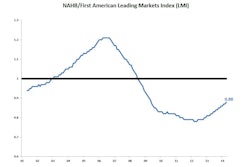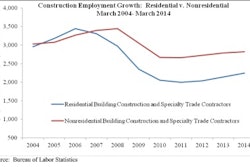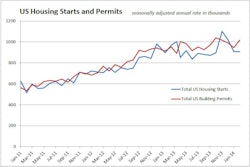Despite deteriorating economic activity at the end of 2013 continuing through the first quarter of this year, growth is expected to pick up in the second quarter with the return of weather to seasonal norms and build to approximately 2.7 percent for all of 2014, according to Fannie Mae’s Economic & Strategic Research Group.
The near-term outlook remains somewhat clouded due in part to an unsustainable build-up in inventory in the second half of last year and as downside effects from the winter have yet to fully materialize. But Fannie Mae expects consumer spending, business investment and housing starts to buoy growth in the second quarter.
“For our March forecast, we expect economic and housing growth to emerge from the tough winter weather and gain momentum into the spring and summer seasons,” said Fannie Mae Chief Economist Doug Duncan. “Fiscal and monetary policy jitters appear to have waned and the most recent employment numbers came in at reasonable levels, helping to ease concerns of a significant slowdown or risk of recession. In addition, we have seen some improvement for consumers as house prices and equity valuations have continued to make incremental additions to household wealth. However, we also see that consumers are still rebuilding their wealth following the crisis and perhaps taking on a more conservative consumption pattern, so our forecast is likely below consensus. Our expectation is that first quarter real growth will come in at about 2.0 percent on an annualized basis, due somewhat to the weather and in particular to the high level of inventory build-up in the business community, which will have to be worked off.
“With regard to housing, we continue to anticipate that the rise in house prices and mortgage rates will take a toll on home sales and homebuilding activity this year, although some modest gains are expected overall,” said Duncan. “Housing starts are expected to rise nearly 20 percent to 1.1 million units this year. In particular, we believe new home sales will continue to perform well as the new home market faces less competition from foreclosures and distressed properties. In addition, supply remains low and time on the market is below the long-term average, which are positive signs for new home sales activity.”



















